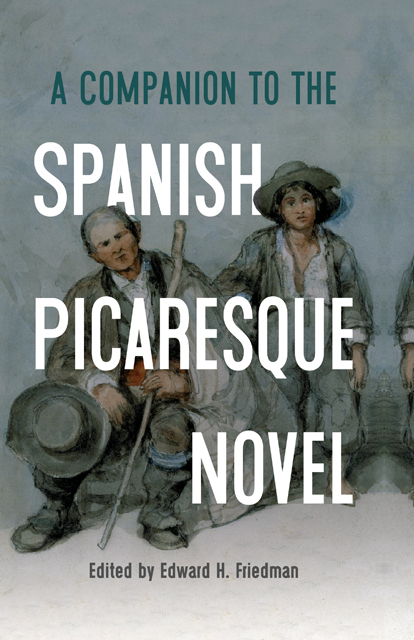Book contents
- Frontmatter
- Contents
- List of Illustrations
- List of Contributors
- Foreword
- 1 The Picaresque as a Genre
- 2 On the Picaresque and Its Origins
- 3 Francisco Delicado, La lozana andaluza
- 4 Lazarillo de Tormes
- 5 Mateo Alemán, Guzmán de Alfarache
- 6 Francisco de Quevedo, La vida del Buscón
- 7 La pícara Justina
- 8 Alonso Jerónimo de Salas Barbadillo, La hija de Celestina
- 9 Miguel de Cervantes and the Picaresque
- 10 Vicente Espinel, Marcos de Obregón
- 11 Carlos García, La desordenada codicia de los bienes agenos
- 12 Estebanillo González
- 13 Critical Approaches to the Picaresque
- 14 The Picaresque in Spanish America
- 15 Continuations: France and England
- 16 The Continuity of the Picaresque: Spain
- Bibliography
- Index
- Tamesis • Companions
12 - Estebanillo González
Published online by Cambridge University Press: 11 January 2023
- Frontmatter
- Contents
- List of Illustrations
- List of Contributors
- Foreword
- 1 The Picaresque as a Genre
- 2 On the Picaresque and Its Origins
- 3 Francisco Delicado, La lozana andaluza
- 4 Lazarillo de Tormes
- 5 Mateo Alemán, Guzmán de Alfarache
- 6 Francisco de Quevedo, La vida del Buscón
- 7 La pícara Justina
- 8 Alonso Jerónimo de Salas Barbadillo, La hija de Celestina
- 9 Miguel de Cervantes and the Picaresque
- 10 Vicente Espinel, Marcos de Obregón
- 11 Carlos García, La desordenada codicia de los bienes agenos
- 12 Estebanillo González
- 13 Critical Approaches to the Picaresque
- 14 The Picaresque in Spanish America
- 15 Continuations: France and England
- 16 The Continuity of the Picaresque: Spain
- Bibliography
- Index
- Tamesis • Companions
Summary
The anonymous, pseudo-autobiographical novel Estebanillo Gonzalez, hombre de buen humor (1646) is one of the chronologically latest and among the most widely read examples of the Spanish picaresque in the seventeenth century. This controversial work has been characterized as both the exhaustion of the picaresque and its culmination. Narrated by Estebanillo, whose diminutive name reflects both his small stature and slight social status, the novel takes the form of a corrosively satirical buffoon’s memoir that unfolds primarily against the backdrop of the Thirty Years’ War (1618–1648). From his first deployment as part of a Mediterranean naval expedition at the age of 13, to his long-dreamed retirement to Naples as the proprietor of a licensed gambling house, Estebanillo holds a variety of positions ancillary to the Spanish military institution. From his posts as army cook and court jester, Estebanillo is able to swindle, trick, entertain, and finally persuade his masters to support him financially. The resulting text, he claims, is meant to honor his patron General Ottavio Piccolomini, the Duke of Amalfi, and to bring pleasure to the Spanish nobility of the Low Countries. Linguistically complex and highly entertaining, Estebanillo has been claimed by scholars as a detailed account of court life and military campaigns in the period, as well as a sourcebook for the lexicon particular to Spanish Flanders. Likewise, it has been read as a sophisticated meditation on the horrors of war. This chapter provides an overview of the debates on Estebanillo’s authorship and subsequent questions regarding the text’s status as fiction or autobiography, and situates the work in the related literary contexts of early modern military life writing and the picaresque novel. Finally, the chapter traces the novel’s chiaroscuro aesthetic – the dramatic interplay of light and shadow, humor and horror – in the life story of Estebanillo the professional buffoon.
In 1646 in Antwerp, a prosperous port city in Spanish Flanders, a curious book appeared in a luxury edition produced by the press of the Widow of Juan Cnobbart.2 Titled La vida y hechos de Estebanillo Gonzalez. Hombre de buen humor.
- Type
- Chapter
- Information
- A Companion to the Spanish Picaresque Novel , pp. 135 - 146Publisher: Boydell & BrewerPrint publication year: 2022



